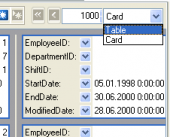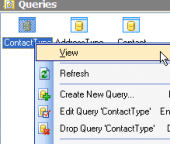MS SQL Maestro online Help
| Prev | Return to chapter overview | Next |
Create Certificate Wizard
Create Certificate Wizard guides you through the process of creating a new certificate. See How To Create certificate for instructions on running this wizard.
The basic principles of Create Object Wizards in MS SQL Maestro are explained in a separate topic. Below you will find a description of wizard steps that are unique for the current object.
To add a new certificate, specify the following options.
Owner
Specify the owner of the certificate. By default, only the owner of an object can perform various operations with the object. In order to allow other users to operate it, privileges must be granted. (However, users that have the superuser attribute can always access any object.)
Source Type
Define the certificate source type.
File
If File or Executable File source type is selected, use this field to specify the complete path (including the file name) to the certificate or to a file that has been signed by a certificate. This can be a local path or a UNC path to a network location.
Assembly
If Assembly source type is selected, use this field to specify a signed assembly from which the certificate will be loaded. The assembly must have been already created in the database.
Subject
The term "subject" refers to a field in the certificate metadata as defined in the X.509 standard. The subject can be up to 4096 bytes long. Subjects that exceed 4096 bytes will be truncated when stored in the catalog, but the BLOB containing the certificate will retain the full subject name.
Private Key File
Specifies the complete path (including the file name) to the private key. This can be a local path or a UNC path to a network location.
Decryption Password
Specifies the password for decrypting a private key that is retrieved from a file. You do not have to specify a decryption password when the private key is encrypted with the database master key.
Encryption password
Specifies the password that will be used to encrypt the private key that is retrieved from a file. The option is not required when the private key will be encrypted with the database master key. Use this option only in case the private key is encrypted with a password. If no password is specified, the private key of the certificate will be encrypted using the database master key. Omitting this clause will cause an error if the master key of the database cannot be opened.
 Use Master Key
Use Master Key
If checked, the private key will be encrypted with the database master key. Otherwise, the private key will be encrypted with a password.
Password
Set the password to encrypt the certificate private key with.
Start Date
The field represents the date when the certificate becomes valid.
Expiry Date
The field represents the date when the certificate expires.
 Active For Begin Dialog
Active For Begin Dialog
If checked, makes the certificate available to the initiator of a Service Broker dialog conversation.
See also: Certificate Editor
| Prev | Return to chapter overview | Next |





 Download
Download Buy
Buy
